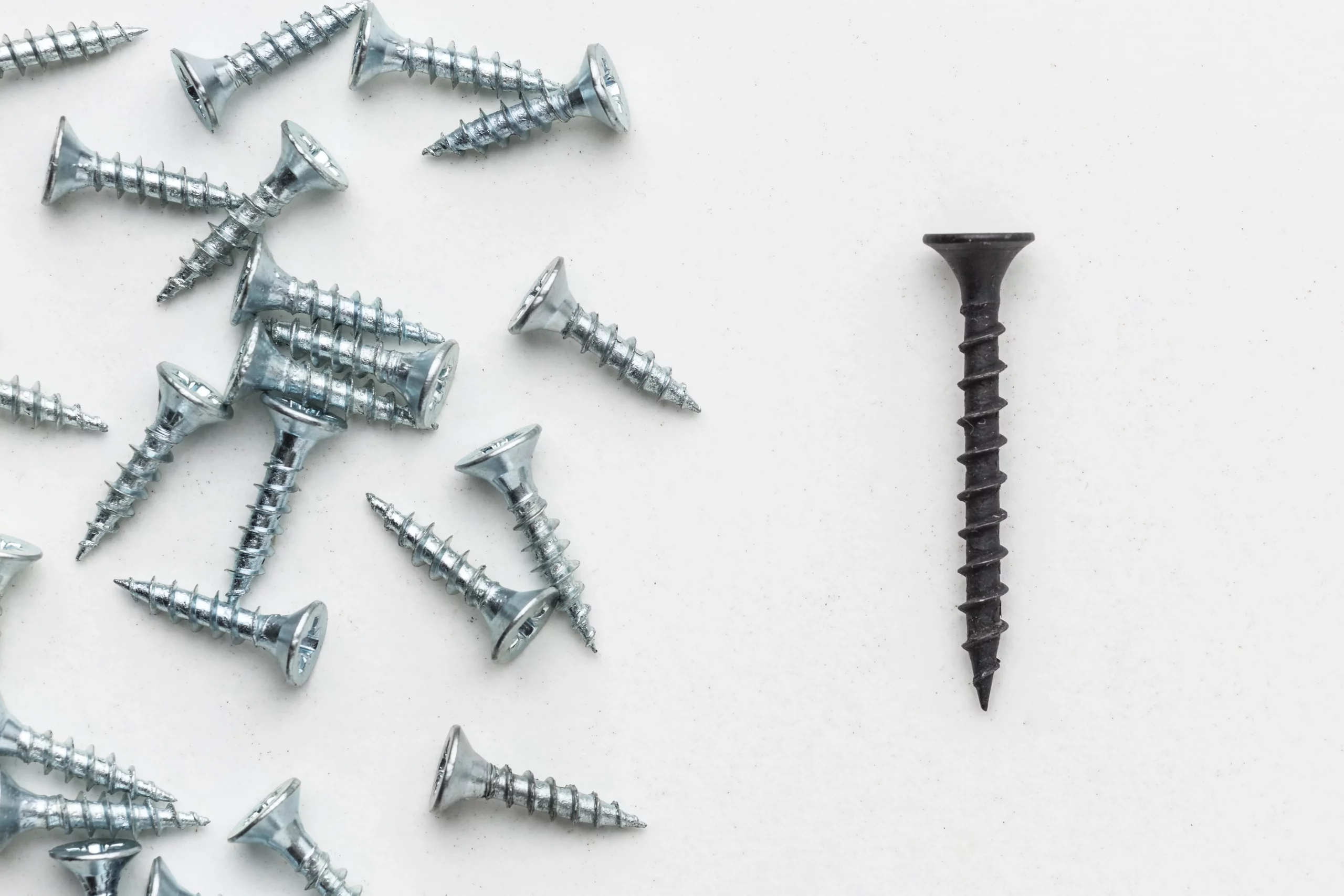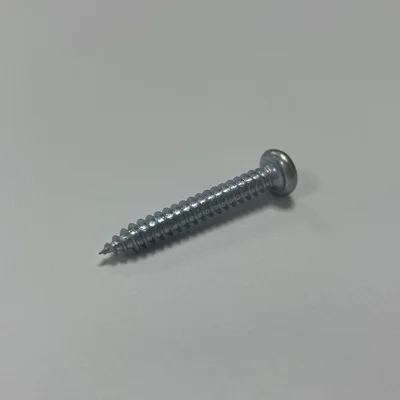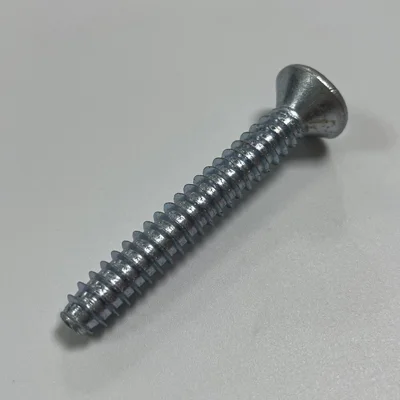caTEGORIES
Tags
Self Tapping vs Self Drilling Screws and the Key Differences in Thread Design

Posted: July 25, 2025
Categories: News
Tags: news
Self-tapping and self-drilling screws each have unique strengths for different jobs. Self-tapping screws create strong threads in pre-drilled holes, ideal for plastics and soft metals. Self-drilling screws combine drilling and fastening, saving time in metalwork. This guide explains their differences, best uses, and how to choose the right one for your project. Trust QEWIT for high-quality, reliable fastening solutions.

What Are Self Tapping Screws?
Definition and Main Job
Self tapping screws are special. They make their own threads when you screw them into a hole you’ve already drilled. Unlike regular screws that need a nut or a pre-threaded piece, these cut or shape threads right into the material. This creates a strong, tight grip. They’re great when you can’t reach the back of the material or when you’re working with thin stuff like sheet metal or plastic.
Types: Thread Cutting vs Thread Forming
Self tapping screws come in two main kinds:
- Thread-cutting: These have a sharp, pointy tip with grooves called flutes. They’re awesome for tough materials like metal or fiberglass. As you screw them in, the flutes carve out bits of material to form threads.
- Thread-forming (or thread-rolling): These have a flat or rounded tip. Instead of cutting, they push the material aside to make threads. They work best in softer stuff like plastic or light metals. They hold tight and resist shaking or pulling out.
At QEWIT, we make thread forming screws for metal and plastic. They meet strict ISO 9001 rules and come with cool coatings like zinc flake, Geomet®, or HDG to keep them strong and rust-free.

Thread Shape and Tip Style
The threads on self tapping screws vary. Their spacing, depth, and shape depend on the material and job. Thread-forming screws have deep, wide threads to move material well. Thread-cutting screws have sharper, more precise threads for cutting cleanly.
What Are Self Drilling Screws?
Definition and Drill-Like Tip
Self drilling screws are like a drill and screw in one. They have a tip shaped like a drill bit, so you don’t need to make a hole first. These screws drill, tap, and fasten all in one go. People often call them Tek screws, after the brand that made them famous.
Drill Point Sizes and Thread Details
Self drilling screws have different tip sizes, from #1 to #5, which show how much they can drill:
- #1–#3: Good for thin metals or plastics.
- #4–#5: Built for thicker steel, up to 12.5mm thick.
Their threads are usually finer and closer together than self tapping screws. This helps them grab metal tightly without breaking or stripping the threads.
At QEWIT, we make self drilling screws that work reliably every time. You can get them in stainless steel or carbon steel, with special coatings like Elementech 1000 to fight rust in harsh conditions.

Thread Design Comparison
Tip Design
Self tapping screws need a pre-drilled hole. Their tips can be sharp (for cutting) or blunt (for forming threads). This depends on the job.
Self drilling screws have a built-in drill tip. You don’t need to drill first, which saves a ton of time.
Thread Pitch and Shape
Self tapping screws often have coarse, bold threads. These grab soft materials like plastic or aluminum really well.
Self drilling screws have finer, tighter threads. They’re made for thin metal or layered materials, so they don’t split or damage the surface.
Chip Removal vs Material Pushing
Thread-cutting self tapping screws slice away material as they go in, leaving some debris.
Thread-forming screws push material aside instead of cutting it. This makes less mess but needs more twisting force.
Self drilling screws make chips while drilling but form clean threads in one smooth step.
Strength and Speed
Self tapping screws can hold super tight in materials like aluminum or plastic because their threads dig in deep. But they take longer since you need to drill a hole first.
Self drilling screws are faster. They’re perfect for big projects or steel structures because they do everything in one move.
Performance and Installation Factors
Pilot Hole Needs
Self tapping screws need a hole drilled first. If the hole is too big, the screw won’t grip well. If it’s too small, the screw or material might break.
Self drilling screws skip the hole step. This is a big win for fast-paced jobs where time matters.
Material Fit
Here’s how the screws work with different materials:
| Material Type | Self Tapping | Self Drilling |
| Plastic | ✅ (Forming) | ❌ (Might crack) |
| Soft metals (Aluminum, Brass) | ✅ (Forming or Cutting) | ✅ (#1–#3 tips) |
| Hard metals (Steel) | ✅ (Cutting) | ✅ (#4–#5 tips) |
| Wood | ✅ (Thread-forming) | ✅ (With careful control) |
Reusability and Thread Wear
You can sometimes reuse self tapping screws if the threads in the material stay good. But if you tighten too much, the threads can get ruined.
Self drilling screws are trickier to reuse. Once you take them out, the hole might be too big, so you’d need to re-tap or use a new screw.
Practical Selection Guide
When to Pick Self Tapping Screws
Choose self tapping screws when:
- You need super strong thread grip.
- You’re working with plastic, aluminum, or soft materials.
- You’ve already got pilot holes or can drill them easily.
- You want screws that resist shaking or pulling out.
When to Pick Self Drilling Screws
Go for self drilling screws when:
- You’re in a hurry to finish the job.
- You’re fastening steel or metal panels.
- You’re working on roofing, HVAC, or big structures.
- You want a one-step process to save effort.
QEWIT helps you pick the right screw. Our team uses tools like torsionmeters and hardness testers to test screws and make sure they’re perfect for your project.
FAQs
Q1. Can self tapping screws go into metal without a pilot hole?
A: No way! Self tapping screws need a pilot hole in metal. Without it, you might crack the material or break the screw. Self drilling screws are better if you don’t want to drill first.
Q2. Are self drilling screws stronger than self tapping screws?
A: Not always. Self tapping screws can hold tighter in some materials because their threads dig in deeper. But self drilling screws are quicker and work great in metal.
Q3. How do I know which screw is best for my job?
A: Think about your material, how fast you need to work, and how strong the hold needs to be. Self tapping screws are great for soft materials and precise jobs. Self drilling screws are awesome for steel and fast-paced projects.


